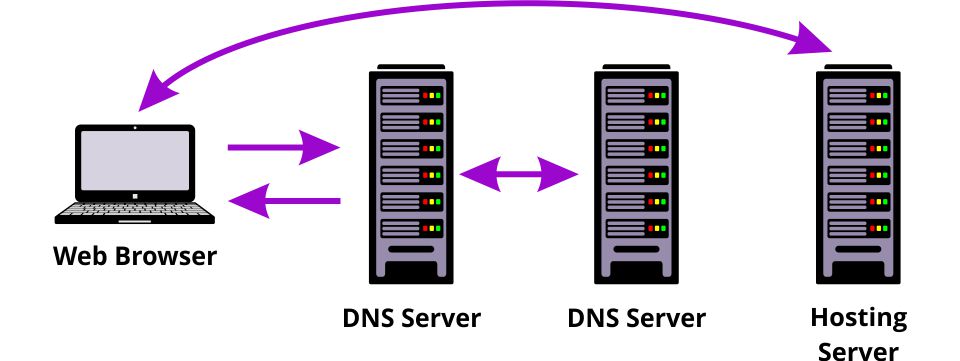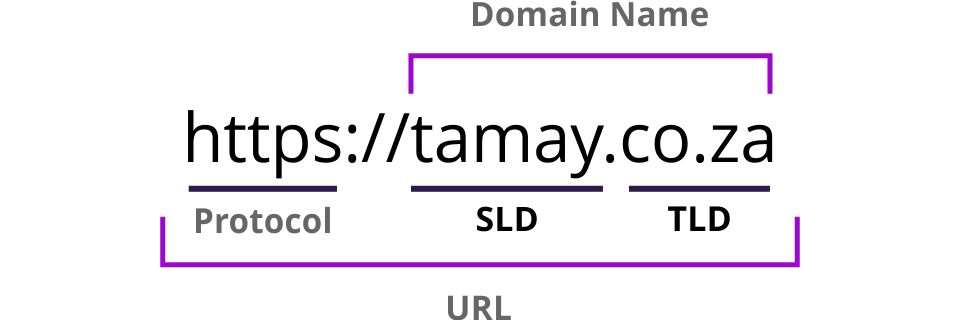A domain name is a unique and easy-to-remember address for a website. For example, the domain name for our website is tamay.co.za. The name maps to an IP address that allows users to reach the website by entering words instead of a numerical IP address.
An IP address is a string of numbers that allows computers to communicate with each other over the internet (for example 102.38.207.96). The strings of numbers would be hard to remember though, so the Domain Name System (DNS) is used instead to convert numerical addresses into easy-to-remember names.
When you type a website’s domain name in your browser, it sends a request to the root DNS server. The server then searches its database and points to the correct DNS server where the address is located. Your browser then uses the IP address to find the hosting server, retrieve the website and serve the web page.

Structure of a Domain Name
A domain name has 2 parts:
- Top-Level Domain (TLD)
- Second Level Domain (SLD)

The top-level domain or extension is the end part of the domain. In the example above, ‘.co.za’ is the top-level domain (TLD).
The second-level domain is the name you choose when you register a domain. In the example above, ‘tamay’ is the second-level domain (SLD).




